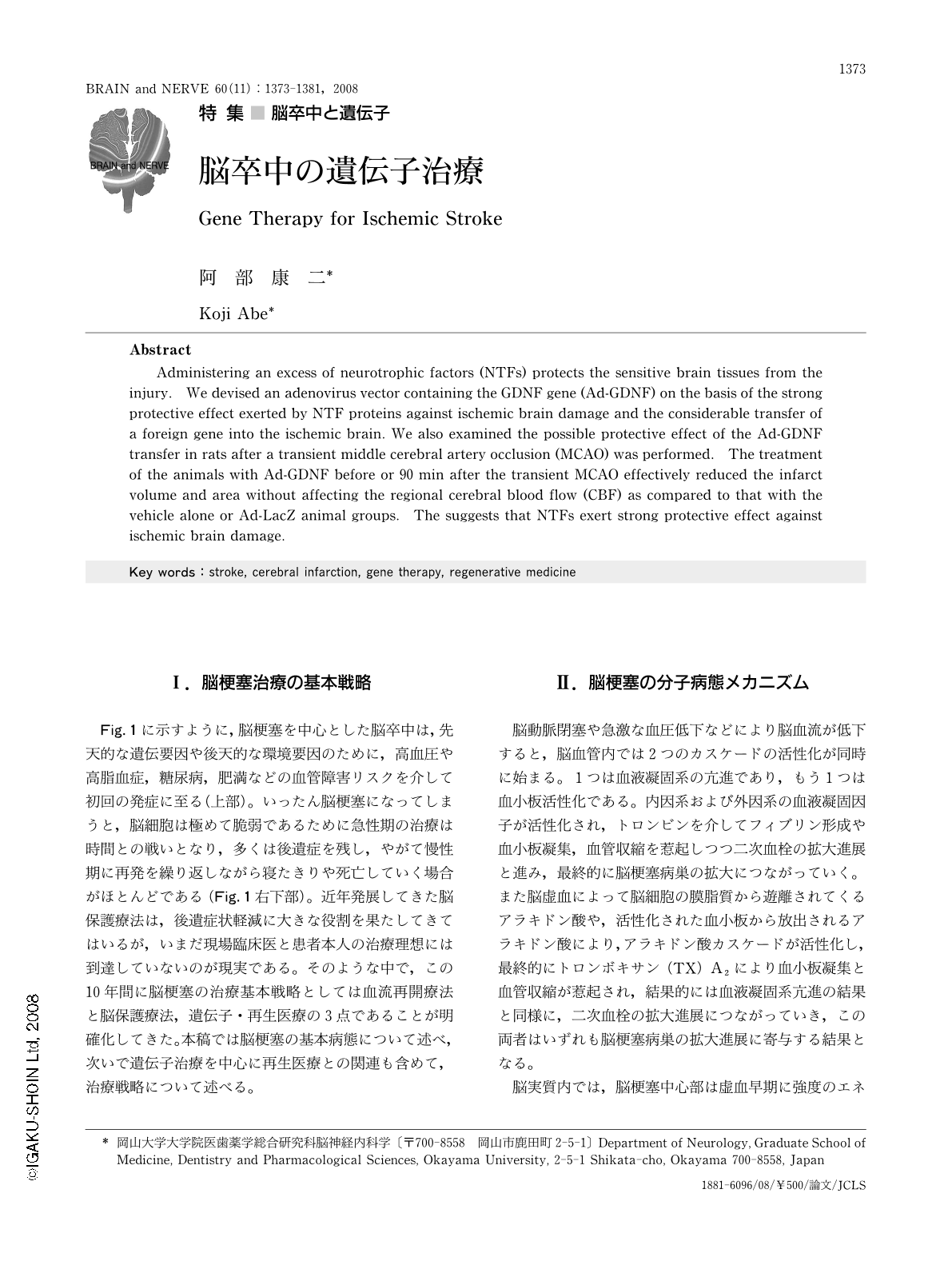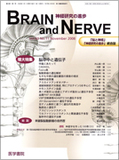Japanese
English
- 有料閲覧
- Abstract 文献概要
- 1ページ目 Look Inside
- 参考文献 Reference
Ⅰ.脳梗塞治療の基本戦略
Fig.1に示すように,脳梗塞を中心とした脳卒中は,先天的な遺伝要因や後天的な環境要因のために,高血圧や高脂血症,糖尿病,肥満などの血管障害リスクを介して初回の発症に至る(上部)。いったん脳梗塞になってしまうと,脳細胞は極めて脆弱であるために急性期の治療は時間との戦いとなり,多くは後遺症を残し,やがて慢性期に再発を繰り返しながら寝たきりや死亡していく場合がほとんどである(Fig.1右下部)。近年発展してきた脳保護療法は,後遺症状軽減に大きな役割を果たしてきてはいるが,いまだ現場臨床医と患者本人の治療理想には到達していないのが現実である。そのような中で,この10年間に脳梗塞の治療基本戦略としては血流再開療法と脳保護療法,遺伝子・再生医療の3点であることが明確化してきた。本稿では脳梗塞の基本病態について述べ,次いで遺伝子治療を中心に再生医療との関連も含めて,治療戦略について述べる。
Abstract
Administering an excess of neurotrophic factors (NTFs) protects the sensitive brain tissues from the injury. We devised an adenovirus vector containing the GDNF gene (Ad-GDNF) on the basis of the strong protective effect exerted by NTF proteins against ischemic brain damage and the considerable transfer of a foreign gene into the ischemic brain. We also examined the possible protective effect of the Ad-GDNF transfer in rats after a transient middle cerebral artery occlusion (MCAO) was performed. The treatment of the animals with Ad-GDNF before or 90 min after the transient MCAO effectively reduced the infarct volume and area without affecting the regional cerebral blood flow (CBF) as compared to that with the vehicle alone or Ad-LacZ animal groups. The suggests that NTFs exert strong protective effect against ischemic brain damage.

Copyright © 2008, Igaku-Shoin Ltd. All rights reserved.


